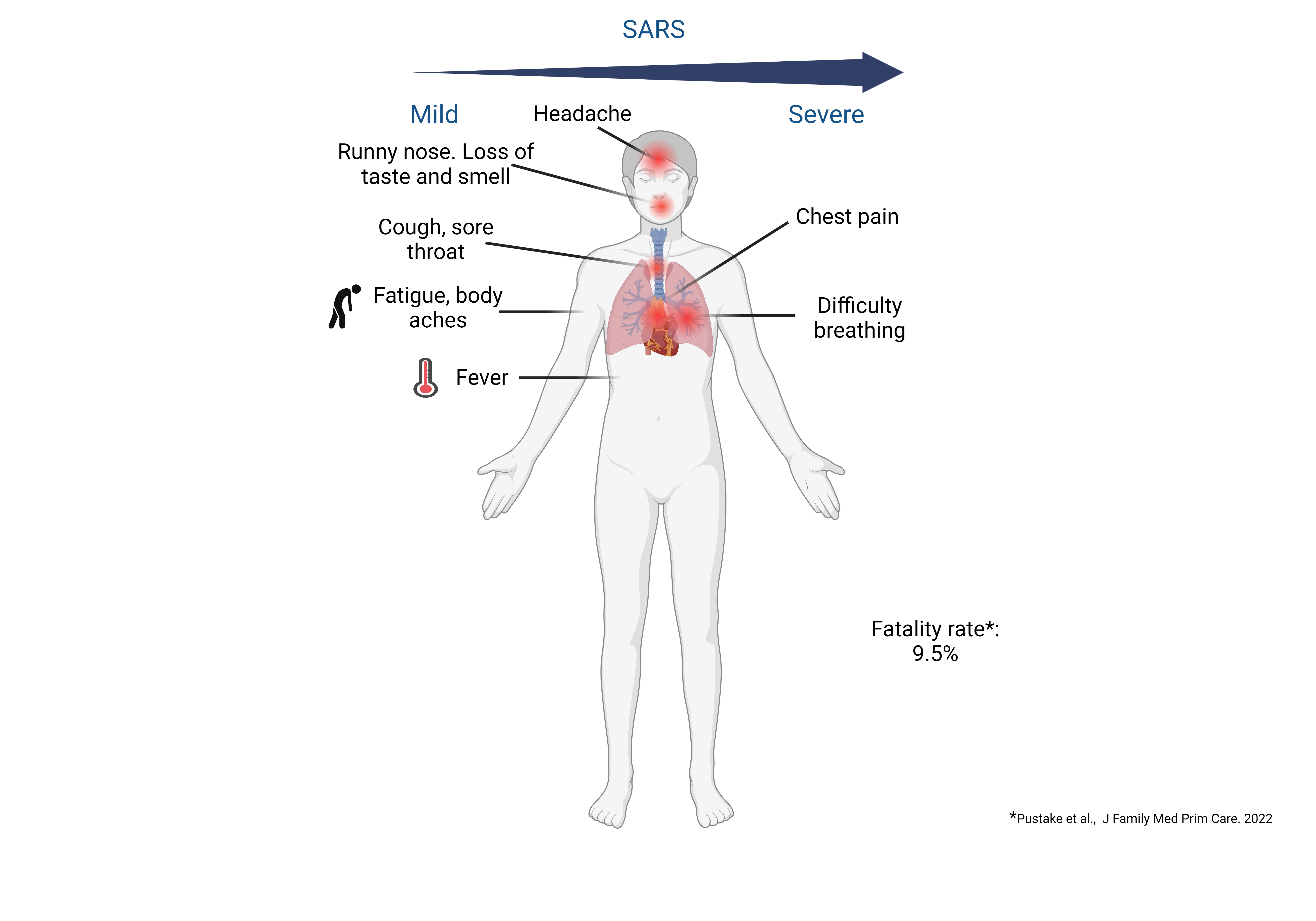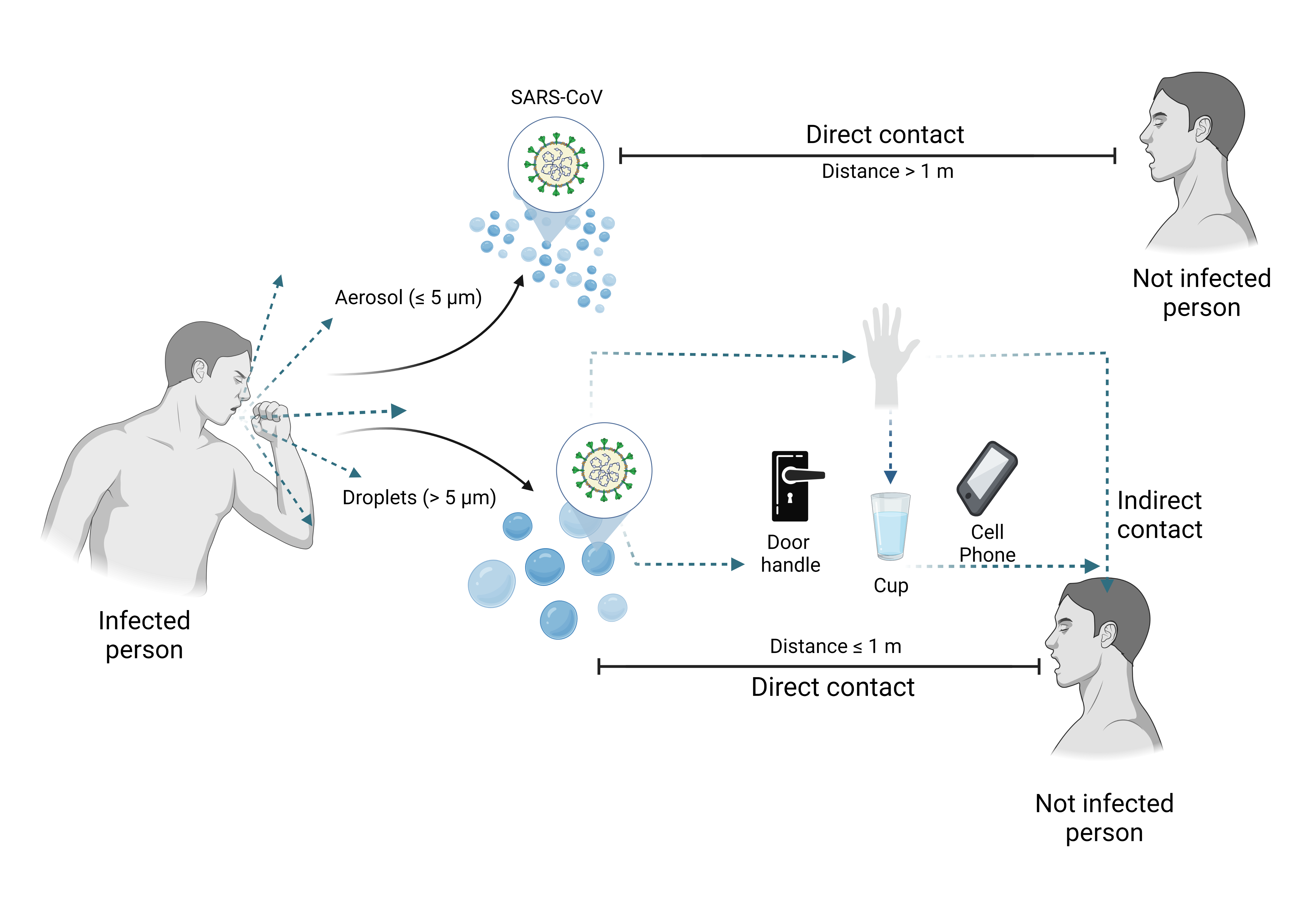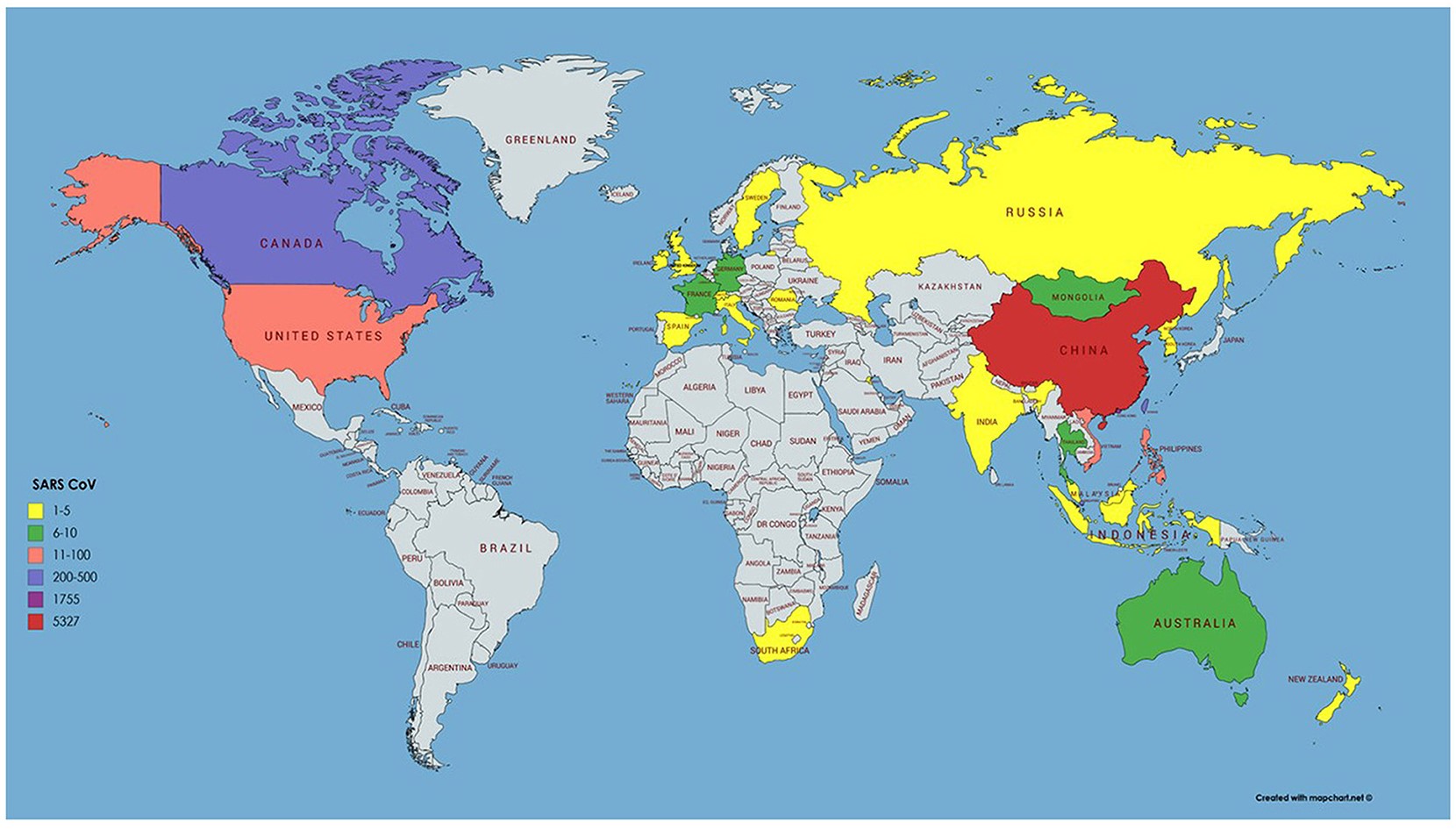
Symptoms may appear 2-7 days (up to 10 days) after exposure to the virus.
Initial symptoms: Fever (>38°C), headache, malaise, muscle pain, mild respiratory symptoms.
Absence of rash, neurologic, or gastrointestinal findings (except occasional early-stage diarrhea).
After 3-7 days: Lower respiratory phase begins with dry cough and dyspnea.
10-20% of cases may require intubation and mechanical ventilation.

SARS-CoV is an airborne virus and spreads through saliva droplets, similar to other respiratory viruses.
Indirect transmission is possible through contaminated surfaces touched by infected individuals.
SARS-CoV demonstrated the ability to spread through international air travel routes.

SARS-CoV caused a global outbreak in 2002-2003, affecting multiple countries and regions.
SARS was characterized by severe respiratory symptoms, leading to a high rate of hospitalization and intensive care unit admissions.
The outbreak put a strain on healthcare systems in affected areas, requiring extensive resources and rapid response measures.
The experience with SARS-CoV contributed to the establishment of global surveillance systems and preparedness strategies for handling emerging infectious diseases, including the subsequent response to SARS-CoV-2 in 2019-2020.